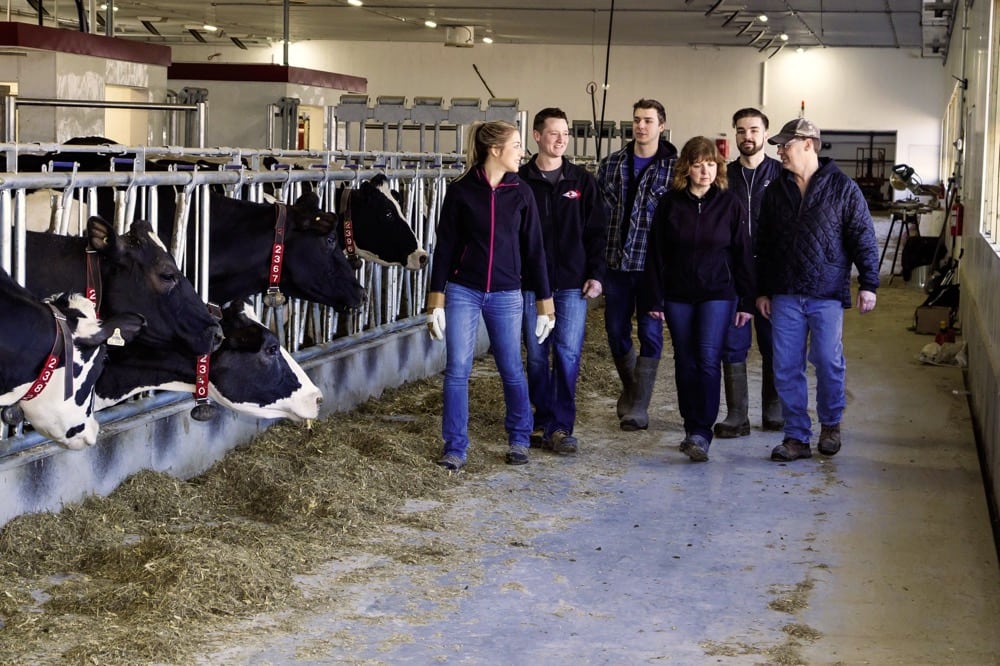UPDATED, June 21, 2015: The 2013 harvest should have been a time of wild celebration. Prairie farmers had produced a bin-busting crop with a record-smashing 76 million tonnes, and with good crop prices, the entire West should have struck up the music and started to dance.
Instead, logistics turned the dream into a nightmare, and although the railways pleaded their innocence, they attracted intense criticism from farmers, grain companies and government.
But was it fair for CN and CP?
“Not entirely,” say long-time independent observers who have seen scores of shipping seasons, both good and bad.
Read Also

Five pieces of unconventional wisdom that can help you reach your goals
Using unconventional wisdom to achieve new year goals on your farm.
“I don’t think it’s fair to have the railways shoulder all the blame, but they certainly carry their share of it,” says Mark Hemmes, president of Quorum Corporation, the federal government’s grain monitor.
“You can’t expect the railways ever to be able to have the capacity to move a crop the size that it was in 2013-14,” adds Richard Gray, a professor of bioresource policy, business and economics at the University of Saskatchewan. “Even if they had all their ducks in a row, we’ve never been able to move a huge crop in one year and probably never will.”
Barry Prentice, a professor of supply chain management at the University of Manitoba, argues it was irresponsible to put all the blame on the railways, adding it was merely more expedient for Ottawa and the grain companies to do that than to be honest with producers.
- More Country Guide: Getting rail back on the political agenda
“In my opinion, the railways were made the whipping boy for the grain surge, and the industry could never have handled the volumes because no grain company has 30-plus per cent extra capacity on standby to deal with such demand, any more than the railways have 30-plus per cent more cars, crews and locomotives available,” Prentice says. “I personally feel that the grain companies were very remiss in adding that blame on the railways when they themselves knew very well they couldn’t move that extra quantity if the railcars had all been there.”
Prentice also scoffs at the notion the railways are the monolithic monopolies they’re made out to be, and he points out that some of the grain companies are large enough to buy and sell the railways they’re pretending to be powerless against.
“They’re not powerless at all,” says Prentice. “In fact, they’re even more powerful because they can direct deliveries to come to one elevator or another. They’ve got elevators on both lines, and they can punish one rail line if they want in favour of another any day… And with trucks with double trailers, you can haul grain across the border, you can haul it to a feedlot, we’ve got a lot more (domestic) processing — it’s not the kind of power of only one opportunity that we had 100 years ago.”
Gray goes so far as to argue the grain companies in fact profited from the log-jam by way of widening basis levels.
“The ironic thing is the railways got blamed but the real beneficiaries of the situation were the grain companies. They’d have had huge basis,” says Gray.
A bad start
The railways have consistently argued that the situation was beyond their control, saying that an unforeseen massive harvest caught them off guard, followed by a severe winter that forced them to move shorter trains.
“We missed it by a mile and a half,” CN’s executive vice-president Jean-Jacques Ruest said in early spring 2014 about the pre-harvest crop production forecasts. “We missed it by 17 million tonnes as an industry, which means 10 million tonnes to CN, 10 million tonnes to CP. And when you miss it by that much and you have the winter from hell, this is why we’re here right now.”
The railways had assumed they wouldn’t need big capacity, and cost-cutting left them ill prepared to adapt. “Both railways had laid-off crews and leased-out rolling stock,” says Gray.
But nothing could have realistically prepared them for 2013, Gray continues. “If they had done everything perfectly, there might have been another few million tonnes that got moved.”
Even when the railways promised to provide 5,000 cars a week, no one was anticipating that every bushel would reach the west coast, Gray notes.
“If you talked to anybody in a grain company, they would have told you then and they’d tell you today there was never any expectation that the whole crop was going to get moved. No one in the know expected that,” Hemmes says.
Making the problem worse was that by mid-October, the 5,000-car promise proved unrealistic too. Both railways experienced derailments that would foreshadow impending doom.
“That was kind of the first domino that fell,” says Hemmes. “And after the middle of October, they could never keep up to the 5,000 cars a week.”
Hemmes says the railways are guilty, however, of worsening the impact by continuing to publish plans all the way up to Christmas that suggested they’d return to that 5,000-car level, and grain companies made sales based on those signals.
“That’s the single driver of what they use to sell into the marketplace, because without railway capacity, they can’t put their product in position at the port,” says Hemmes.
Grain companies make sales 10 to 12 weeks ahead, since they need to sign contracts in the country to buy the grain and book an ocean vessel. “This is where it all started to fall apart,” Hemmes says.
But it’s the railways that are insulated from the pain, because they know the business will eventually come their way. “They know that whatever they don’t move this week, they’ll move next week. What they don’t move this month, they’ll move next month. What they don’t move this quarter, they’ll move next quarter. There’s no risk for them whatsoever,” Hemmes says.
By contrast, the railways do feel pressure to move traffic in the more competitive container market.Otherwise the opportunity disappears, notes Paul Earl, director of the University of Manitoba’s Transport Institute.
But technically, the railways aren’t doing anything wrong. They’re operating within the confines of their regulatory and legislative obligations.
“It’s arguable that it wasn’t the railways’ fault at all because they were doing exactly what national transportation policy says they should do, and that is to operate as commercial entities,” says Earl. “And if you operate as a commercial entity, then you pursue the most profitable and efficient way to do what is in front of you.”
Their accountability is to their shareholders, and in a marketplace where there’s virtually no competition, they have the capability of removing all kinds of risks and to optimize their productivity and asset utilization, says Hemmes. It’s why, for instance, they don’t maintain a lot of profit-draining surge capacity.
“And why should they? It’s not like there’s a competitive compulsion where they’re afraid they’re going to lose market share,” says Hemmes. “It’s a marketplace that’s entirely predicated on moving grain from the country system to the port by rail. You’re not going to truck it. It’s just not practical.”
Inherent flaws
“Between the companies and the railways, they probably need to figure out a better system,” says Gray, “especially for when you’re planning to ship 5,000 cars the first week of December and it’s 40 below and you ship 2,000. How do you sort that mess out? They don’t have a system.”
When cars fell behind, nobody knew what grain was going to move when. Some orders could be six weeks old, some two weeks old, and others a week old, but the railways weren’t obliged to take the oldest orders first, causing further confusion, Gray says.
Another major structural issue for grain companies is how rail cars are moved to port. A train can leave a Saskatchewan elevator headed for the coast, but then be pulled into a yard in Edmonton and be broken up, leaving cars to arrive in Vancouver in no particular order over the next five to 10 days. Railways try to maximize their throughput in the mountains, and will scatter freight, mixing heavy grain cars with light cars to do so.
“You’ve basically got somebody saying, just fill up my rail yard and I’ll pull out trains and make sure each train is a certain length and a certain weight,” says Gray, noting it might make sense from a railway perspective, but it certainly doesn’t help grain movement.
“I think the system could be co-ordinated and improved a lot, but I don’t think the incentives are there to do it,” says Gray. Nor are industry players working well together to sort out the problems, he says. “And frankly when you think of the profits that are made when the system doesn’t work well, the incentives to sort it out aren’t very big.”
This article first appeared as “Spreading the blame” in the May/June issue of Country Guide.
CORRECTION, June 21, 2015: Paragraph 24, in which Quorum Corp.’s Mark Hemmes is cited as stating “the railways are insulated from the pain” of last year’s grain transportation logjam, originally and incorrectly cited Hemmes as stating “the grain companies are insulated from the pain,” due to an editing error. Country Guide apologizes for the error and for any confusion caused.
















